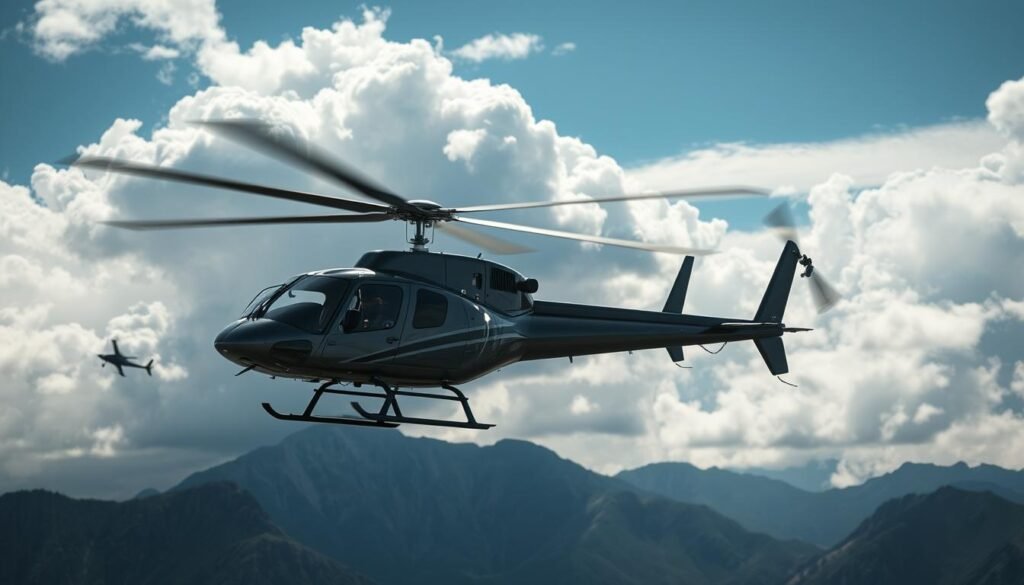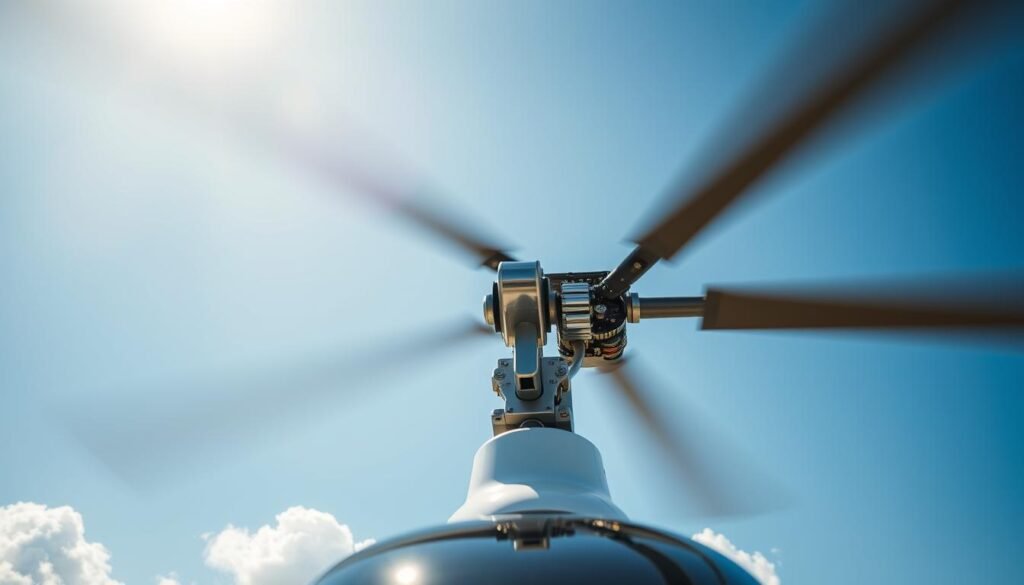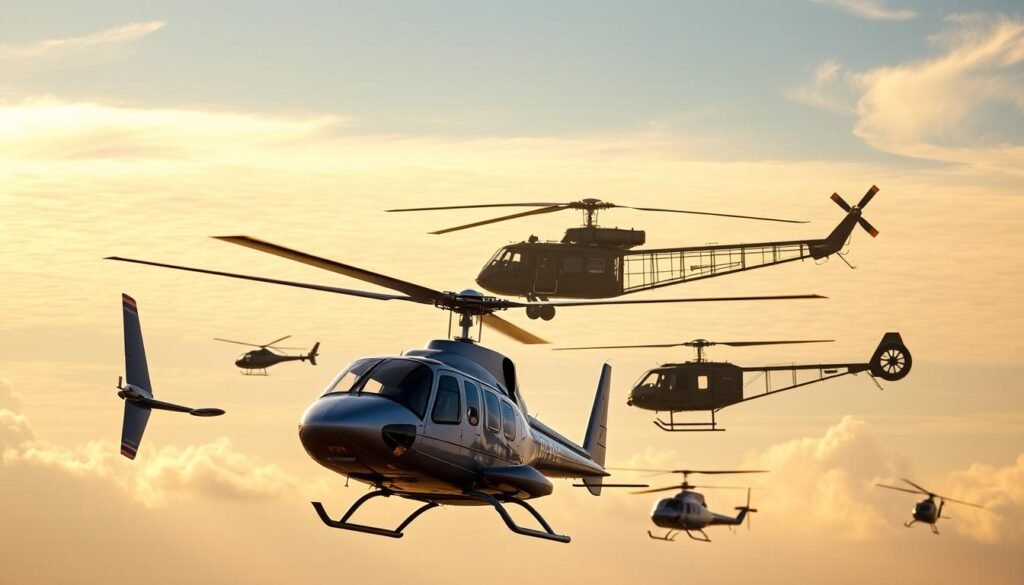Helicopters are one of the most versatile and recognizable aircraft in modern aviation. Their ability to take off and land vertically, hover in place, and fly in multiple directions makes them invaluable for a range of industries, from military operations to emergency rescues. But how did helicopters evolve into the powerful machines we see today? This article explores the fascinating history of helicopters, tracing their development from early concepts to the advanced rotary-wing aircraft that revolutionized aviation.
The Early Concepts of Vertical Flight
The dream of vertical flight dates back centuries, with ancient civilizations contemplating the possibility of flying straight up into the sky. One of the earliest known designs resembling a helicopter came from Leonardo da Vinci in the 15th century. Da Vinci sketched a flying machine he called the “aerial screw,” which used a spiral design similar to modern-day rotors. While this concept never became a working prototype, it highlighted the human fascination with vertical flight.
Fast-forward to the 19th century, inventors like Sir George Cayley and Thomas Edison conducted early experiments with helicopter-like machines. Though these attempts faced significant challenges due to limited technology and understanding of aerodynamics, they laid the groundwork for future innovations.
The First Successful Helicopters
The first significant breakthrough in helicopter design came in the early 20th century. In 1907, Paul Cornu, a French engineer, built and flew a rudimentary helicopter that briefly lifted off the ground. Though his machine could not sustain flight, it marked an important milestone in vertical aviation.
It wasn’t until the 1930s and 1940s that helicopters became truly viable. Igor Sikorsky, a Russian-American aviation pioneer, is often credited with building the first practical helicopter. His VS-300, which first flew in 1939, was the first helicopter to feature the single main rotor and tail rotor configuration that is still used in most helicopters today. Sikorsky’s design proved that helicopters could not only fly but also hover and maneuver efficiently.
In 1942, Sikorsky’s R-4 became the first mass-produced helicopter and was used extensively by the U.S. military during World War II. This model revolutionized battlefield logistics, allowing troops and supplies to be transported in ways that were previously impossible with fixed-wing aircraft.
Helicopter Development in the Post-War Era
After World War II, helicopters underwent rapid development. Civilian and commercial uses of helicopters expanded alongside military applications. During the Korean War, helicopters like the Bell H-13 Sioux were used for medical evacuations, saving countless lives by quickly transporting wounded soldiers from the battlefield to medical facilities. This was the start of helicopters’ critical role in MEDEVAC (medical evacuation) operations.
The Vietnam War further cemented the helicopter’s place in military history. The Bell UH-1 “Huey” became an icon of the conflict, widely used for troop transport, air assaults, and medical evacuations. The helicopter’s versatility in difficult terrain and dangerous conditions made it an essential tool for both combat and humanitarian missions.
The Role of Helicopters in Modern Aviation
Helicopters today are used in a wide array of industries, demonstrating how far the technology has come since the early 20th century. Some of the key areas where helicopters have revolutionized aviation include:
- Search and Rescue Operations: Helicopters are the go-to choice for search and rescue missions in hard-to-reach areas, including mountains, oceans, and disaster zones. Their ability to hover and land in tight spaces makes them ideal for rescue operations that fixed-wing aircraft cannot perform.
- Medical Emergencies (Air Ambulances): Helicopters are crucial for emergency medical services, where time is critical. Air ambulances transport patients from accident scenes to hospitals, sometimes bypassing hours of road traffic in just minutes. The MEDEVAC role pioneered in wartime is now a standard practice in civilian rescue operations.
- Military and Defense: Modern military helicopters, such as the AH-64 Apache and CH-47 Chinook, are integral to combat and logistics operations. These helicopters are used for everything from troop transport to direct combat engagement, proving their value as versatile military tools.
- Aerial Construction and Heavy Lifting: Helicopters play a key role in construction projects that require heavy lifting. The Sikorsky S-64 Skycrane, for example, is used to transport heavy materials to locations that are otherwise inaccessible, such as mountainous terrain or dense urban environments.
- Tourism and Leisure: Helicopter tours have become popular in tourist destinations, offering breathtaking views from above. Whether it’s flying over the Grand Canyon, New York City, or the Hawaiian islands, helicopters provide a unique and thrilling way to see the world.
- Firefighting: Helicopters equipped with water buckets or hoses play a critical role in fighting wildfires. Their ability to reach remote locations quickly and drop large quantities of water makes them indispensable during wildfire seasons, especially in regions like California and Australia.
How Helicopter Technology Continues to Evolve
The future of helicopter technology looks promising, with innovations aimed at improving efficiency, safety, and environmental impact. Some of the most exciting developments include:
- Electric and Hybrid Helicopters: Companies like Bell and Airbus are working on electric and hybrid helicopters that reduce emissions and operating costs.
- Unmanned Helicopters: Drone technology is influencing the helicopter industry, with the development of unmanned aerial systems (UAS) capable of performing tasks such as surveillance, logistics, and search and rescue without a pilot.
- Urban Air Mobility: Helicopters may play a significant role in the future of urban transportation. Companies like Uber are exploring the potential for urban air taxis, which could help alleviate traffic congestion in major cities by offering helicopter-like ridesharing services.
Conclusion
The history of helicopters is one of innovation, perseverance, and remarkable technological advancement. From the early sketches of da Vinci to the high-tech machines used today, helicopters have revolutionized aviation in ways that few could have predicted. As technology continues to evolve, helicopters will likely remain at the forefront of both military and civilian aviation, helping to shape the future of transportation, rescue missions, and air travel.
Key Takeaways:
- Leonardo da Vinci envisioned the idea of vertical flight as early as the 15th century.
- The first successful helicopters were developed in the early 20th century, with Igor Sikorsky playing a pivotal role.
- Helicopters played crucial roles in World War II, the Korean War, and the Vietnam War, proving their value in combat and rescue operations.
- Today, helicopters are used for everything from search and rescue to firefighting and tourism.
- Emerging technologies such as electric propulsion and urban air mobility are shaping the future of helicopter aviation.
By understanding the rich history of helicopters, we gain a greater appreciation for how they continue to shape the world today, both in the skies and on the ground.
Related Articles
- How Helicopters Revolutionized Emergency and Rescue Operations
- Helicopter Milestones: Important Breakthroughs in Aviation History
- Iconic Helicopters That Shaped the Future of Aviation
- The Role of Helicopters in World War II and Beyond
More from This Category
- Top 10 Helicopter Facts You Probably Didn’t Know
- Military Helicopters Through History: Key Models and Their Impact
- How Helicopters Work: The Science Behind Vertical Flight
- Who Invented the Helicopter? A Look at the Pioneers Behind Rotary Flight
- Helicopter Evolution: How Rotary-Wing Aircraft Changed Aviation Forever
- The Fascinating History of Helicopters: From Invention to Modern Aviation



